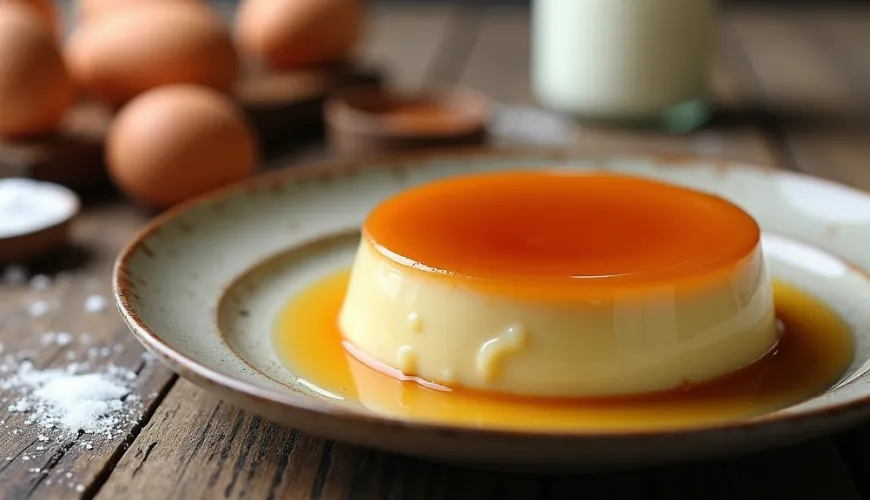
How to Make St. Martin's Croissants with Delicious Filling

St. Martin's Croissants - A Tradition Scented with Vanilla and Cinnamon
November is a time of calm, misty mornings, and the first chilly premonitions of winter. Quietly appearing on the calendar is November 11th – the feast of St. Martin. While many associate it primarily with the legendary St. Martin's wine and roasted goose, there is another fragrant tradition that has regained its place on the festive table in recent years: yeasted St. Martin's croissants.
Their story is simple yet beautiful. According to tradition, they symbolize the horseshoes of St. Martin, who on a white horse heralds the beginning of winter. In the past, housewives baked them for farmhands and maids as a thank you for their year-long work. Today, St. Martin's croissants made from yeasted dough are a beloved pastry that connects generations – grandmothers bake them from old notebooks, parents try them with their children, and food bloggers share their modern variations on social media.
The croissants have their charm not only in taste but also in their preparation. The yeasted dough with a typically buttery aroma, a delicious filling of nuts or poppy seeds, and the scent of vanilla wafting from the oven – it's an experience that delights all the senses.
What Makes a Proper St. Martin's Croissant?
The foundation is, of course, yeasted dough, which is soft, delicate, and has a slightly buttery taste. It requires quality ingredients – plain flour, fresh yeast, butter, milk, and a bit of sugar. The dough should rest for at least an hour to gain volume and the right structure. Many recipes also add an egg yolk or sour cream, which enriches the dough.
The filling is another crucial element. Traditionally, croissants are filled with ground walnuts, poppy seeds, or plum jam. Every household has its favorite way. Walnut filling is often mixed with sugar, milk, and sometimes rum or lemon zest. Poppy filling often receives a gentle cinnamon note. You will also often encounter plum jam, which adds a pleasantly tangy taste and beautifully contrasts with the dough.
The croissants are shaped like horseshoes, which is not accidental. They symbolize St. Martin's horse, who, according to legend, arrived on a snow-white steed and brought the first snow. After baking, the hot croissants are coated in vanilla sugar, which gives them a delightful crunch and their characteristic aroma. Some people also brush them with egg before baking for a golden crust – this too is a matter of tradition and habit.
Yeasted St. Martin's Croissants - A Recipe Passed Down
The taste of the croissants lingers in the memory – as does the atmosphere when the whole kitchen transforms into a fragrant workshop. The homemade recipe for St. Martin's croissants from yeasted dough isn't complicated but requires patience and a love for baking. That's what's beautiful about it. If you're looking for inspiration on how to start, the following recipe is among the most popular and has been tested in many Czech kitchens.
Recipe for Yeasted St. Martin's Croissants:
For the dough:
- 500 g plain flour
- 250 ml lukewarm milk
- 80 g granulated sugar
- 100 g melted butter
- 1 cube of yeast (42 g)
- 1 egg yolk
- a pinch of salt
- lemon zest or vanilla sugar for flavoring
For the filling:
- 200 g ground walnuts or poppy seeds
- 100 ml milk
- sugar to taste
- a pinch of cinnamon, or a tablespoon of rum
For finishing:
- egg for brushing
- vanilla sugar for coating
The process is simple – first, a starter is prepared from yeast, sugar, and part of the milk. Once it rises, it's mixed with the other ingredients to create a smooth dough. After rising, the dough is divided into smaller balls, rolled into a circle, and cut like a pizza. Each triangle is filled and rolled into the shape of a croissant. They are baked for about 15–20 minutes at 180 °C until golden.
This is one of those recipes that remain in family memory. Perhaps grandma added a bit of honey to the filling, while mom added more butter. Every detail has its story.
Baking as a Ritual of Slowness
In today's fast-paced world, making yeasted dough might seem like an unnecessary luxury. After all, there are so many quick recipes, pre-made products, and sweets readily available. But it's precisely finding the time to knead the dough, let it rise, and patiently roll the croissants that is the most beautiful. It's a return to slowness, craftsmanship, and the joy of creation.
Moreover – as famous food blogger and cookbook author Karolína Fourová says:
"Baking is a way to give the home fragrance and heart."
This is especially true when the whole family gets involved in baking. Children can help with shaping, sprinkling sugar, or just watching the dough rise. They learn patience, time perception, and a sense of tradition.
Sustainable Home, Sustainable Tradition
Interestingly, baking at home is also a way to live more sustainably. Homemade yeasted croissants contain no preservatives, artificial flavors, or unnecessary packaging. Ingredients can also be selected with the environment in mind – flour from regional mills, eggs from cage-free farms, butter from the farmer's market. Even nuts can be sourced locally, perhaps from a friend or one's own garden.
And if it happens that a croissant or two is left over – which is rare – they store well and might taste even better the next day. Plus, they freeze without issue.
When Tradition Gets a New Coat
Although classic recipes have their charm, modern cuisine isn't afraid to experiment. Some recipes add spelt flour or coconut sugar to the dough. There are also lactose-free versions, where butter is replaced with plant-based fats, or vegan versions without eggs and milk. Surprisingly, they taste very good and delight those with specific dietary habits.
Popular too are the so-called "fit" versions – less sugar, more fiber, or filled with homemade jam without added sugar. All these variations prove that the recipe for yeasted St. Martin's croissants is lively and adaptable. Tradition doesn't need to be preserved to survive – it just needs to be naturally developed.
A Small Ritual with a Big Heart
Perhaps this is why yeasted St. Martin's croissants are so beloved. It's not just about taste, but the entire context – memories, sharing, and the joy of simple things. Baking croissants can become an annual family ritual just like decorating the Christmas tree or coloring Easter eggs.
And what more? The moment when the croissants are taken out of the oven, lightly sugared, and served still warm on the festive table – that's when time stops. And it's in such a quiet moment that memories are born, lasting beyond just one season.

